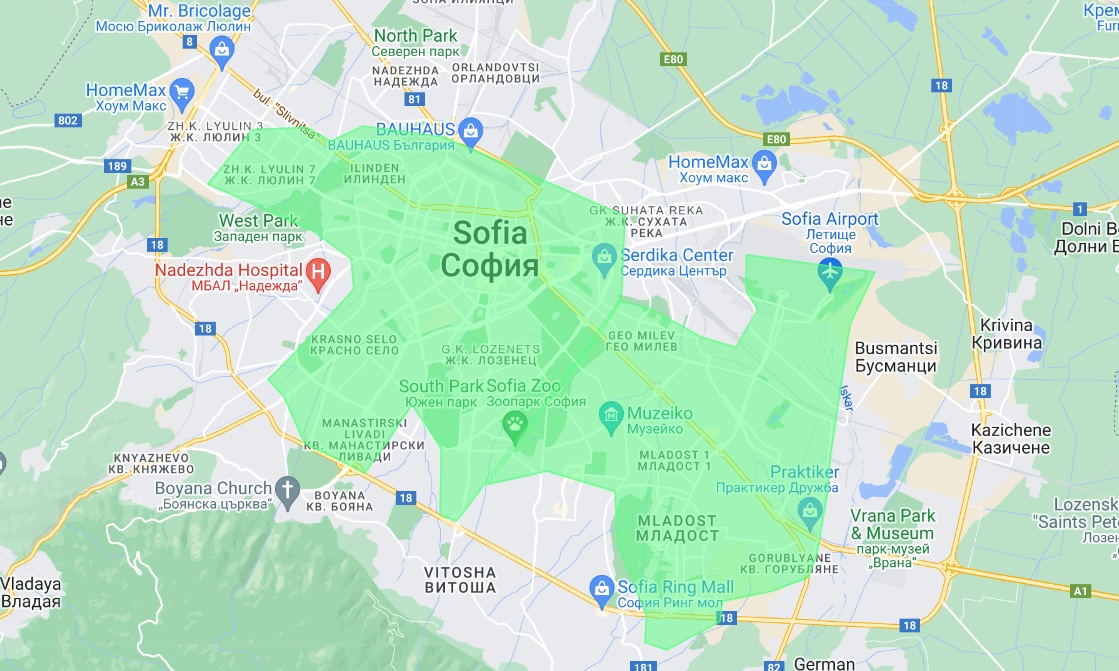Internet
Internet
Networking
News
Ultra-fast fibre connects winegrowers in Austria
Wine-growing regions of Lower Austria have been connected with reliable and super-fast fibre internet thanks to a partnership between Slovenia’s Kontron and Speed Connect Austria. The residents of rural areas traditionally dependent on agriculture – and known for vineyards and wine-growing – can now benefit from the new opportunities of a digital society.
The major milestone has been reached less than a year into the project, with more than 800km of fibre being laid in Lower Austria as part of Speed Connect Austria’s open access network. Slovenia Kontron’s Iskratel broadband products, including OLTs (Optical Line Terminals) and ONTs (Optical Network Terminals), have been used as part of the project, enabling 10-gigabit connectivity for residents in the rural region.
“We are delighted to see Speed Connect Austria bring ultra-fast fibre broadband to underserved rural areas in Austria,” says Svjetlana Kalaba, Executive Director Business Unit Broadband at Kontron Slovenia. “This efficient deployment will benefit all those that have been left behind, and we are privileged to play a key role in this success.”
One of the locations benefitting from fibre connectivity is the Zellerndorf district located in the 'Retzer Land', a part of the Weinviertel wine-growing region in the north-east of Lower Austria. The Zellerndorf area has seen almost a 10% population decrease over the last two decades. An improved online experience and internet access were identified as crucial to ensure residents have a better place to live and work.
"The investment in modern infrastructure makes our community ready for the digital future and enormously strengthens our attractiveness as a location,” says Markus Baier, the Mayor of Zellerndorf. “Fibre connectivity is as important in creating new opportunities for residents and businesses as electricity was 150 years ago. Fast internet sustainably improves the quality of life, economy and infrastructure in our community.
“I am delighted with the success of the collaboration between Speed Connect Austria and Slovenia’s Kontron that has seen a quick and efficient fibre rollout, thanks to the advanced technology and great project planning.”
According to FTTH Council Europe’s recent FTTH Market Panorama report, Austria has a 42.2% coverage rate with more than 1.7 million homes passed with fibre as of September 2023.
“We are celebrating a key milestone for our project and will continue to help drive up the coverage and take-up rates of fibre across Austria to keep pace with other EU countries,” notes Antonio de Vall, CFO at Speed Connect Austria.
For more from Slovenia's Kontron, click here.
Simon Rowley - 2 September 2024
Internet
Networking
WAN
Deliberations on WAN performance: Identifying needs
By David Trossell, CEO and CTO of Bridgeworks and Graham Jarvis, Technology Journalist
Wide Area Networks run the world. The most famous of which is the internet. Just about every person and organisation depends on it. Without the web, the world would just grind to halt, and that’s what can happen to individuals and organisations when they are blighted by network latency, packet loss and poor bandwidth utilisation.
Robert Sturt, Founder of Netify, looks at what SD-WANs are and what they can replace. He suggests that organisations need to examine their implementation and deployment strategies, as SD-WANs are cloud-first and they employ intelligent application routing across WANs. He considers bandwidth and the optimisation of traffic, arguing that SD-WANs can help to select the optimal route for any type of traffic, based on configuration and policies. For other factors, organisations should consider include granular Quality-of-Service (QoS); DIY vs managed SD-WAN; private backbone; public gateway or VPN; integration with cloud marketplaces; SASE and added security.
Beyond SD-WANs
What he misses out, is why SD-WANs are often not enough. Yes, they are a great technology, but they can often also benefit from WAN Acceleration overlays. WAN Acceleration can also be deployed aside from any SD-WAN. So, how an organisation goes about boosting their WAN performance should consider more than just one technology to ensure that its data can travel across efficiently at speed, with latency as well as packet loss minimised, while maximising bandwidth utilisation. To find out how they can achieve a secure and highly performant WAN, organisations should conduct and audit and where possible, conduct proofs of concept.
Before that, David Trossell, CEO and CTO of Bridgeworks, urges organisations to go back to basics. That means asking questions about what problems are impacting WAN performance or functionality. This is crucial because once we have these facts, we can then start to review the technologies in terms of how this will affect the key issues with the current WAN setup.
Now, the first tool that organisations tend to migrate to is SD-WANs. They are well publicised as the answer. However, not every issue will be resolved with its implementation.
The trouble is that there are many myths surrounding SD-WANs. David explains, “First up, will it solve latency issue? Well, latency is latency! It’s a fact of life and the greatest fixed constant in the universe – the speed of light. Nobody has found a method of increasing it, and latency is the biggest killer of performance. What is worse is if you add a small sprinkling of packet loss as well, it compounds the effect of latency. Typically, a 10ms of latency will rob you of 90% of your performance.”
Tuning WAN performance
There are several options for tuning WAN performance that organisations could consider with SD-WANs. These include having layers of WANs, such as MPLS, a dedicated WAN connection to the internet or broadband. Yet, they are often prone to congestion, reliability issues and adverse changes in latency. The greater the distance, the greater the latency with broadband connections.
Despite these challenges, there are resolutions that can help to mitigate the effects of latency and packet loss. They enable the intelligent routing of data to prioritise traffic on these links. One of the most common techniques for this is deduplication. David says, “This works extremely well with files or data that are compressible or traverse the WAN frequently. However, this does not work well with encrypted or pre-compressed files, such as PDF files. As many organisations now have a policy of encrypting traffic over their LAN, this is going to negate any benefit from data deduplication when the files traverse the WAN.”
All organisations have time-sensitive data, or data that has a higher level of importance. This includes reconciliation back to the head office and this is where a QoS option may be advantageous. The trouble is that IT estates aren’t static, they are always changing because new users, offices, data flows, cloud migrations and offside back-ups all demand changes to SD-WAN setups.
Building skills and efficiency
David stresses that while SD-WANs are easy to setup and deploy, "it still takes time to build these skills and maintain the efficiency of the configuration. It’s about time these SD-WANs incorporated AI to lessen the burden on the network administrator. That said, SD-WANs have been a great step forward for WAN management.
“With the constant need to transport data over WANs over increasing distance, as we move data around the world for processing, two factors need to be addressed: speed and security.”
Latency and packet loss are the most critical factors to address. If organisations fail to address them, they will not see an exponential increase in WAN performance, nor increase their bandwidth utilisation with their existing WANs. By mitigating them, it’s possible to maximise WAN performance, even at higher speed bandwidths, which are now available to organisations at more sensible prices than in the past.
The trouble is that most customers are only obtaining a fraction of the data and traffic throughput over their existing WANs – wasting money (ROI), as they are not able to fully utilise their existing bandwidth to its fullest. This increases the time it takes to transfer and receive data.
He adds, “Whilst deduplication can be employed within the SD-WAN appliance to give a level of performance increase, this tends to be at the lower WAN bandwidths. This is because as we increase the WAN bandwidth, we start to consume more and more CPU and memory cycles managing the deduplication process.
“I’m a great fan of SD-WANs they provide great flexibility and the auto roll-out is a great bonus to travelling around updating routers and firewalls. But they do have their limitations and maximising the throughput is one of the major issues. To release the full performance of the WANs, we need to tackle the to two factors that seriously affect performance: latency and packet loss. The technology that addresses these two issues head on is WAN Acceleration.”
WAN Acceleration camps
WAN Acceleration falls into one of two camps: Those that use UDP and those that use TCP/IP to transfer data over the WAN. Organisations can use TCP/IP as an accelerator if that is the cause of the problem. He adds, “The UDP products tackle the latency issue by bypassing TCP/IP and just firing our UDP packets as fast as they can. However, packets will be lost and it is up to the source and destination programs to sort out what went missing and resend them.”
He also finds that the downside of this is that it takes up memory and CPU cycles. This limits the bandwidth capability, and they create their own cut-down version of TCP/IP.
As for TCP/IP, there are usually several virtual connections opened between the source and the destination. Transmission begins when the first connection is made, and after it receives the acknowledgement (ACK) signal. It can then send more data along the second connection, and so on until the pipe has been filled up to the point of reaching the maximum capacity of the WAN.
The benefits of this approach include a low CPU and memory overhead because he explains that it makes use of the new network cards. They offload tasks from the CPU. He explains, “These can scale to 80GB and above, and with all that spare CPU and memory we now have, we can add AI to manage the whole process including packet loss mitigation."
WAN Acceleration: data agnostic
WAN Acceleration is comparatively data agnostic. It means that the performance of those products, such as PORTrockIT, is not governed by the deduplication ration. The data is not manipulated in any way. It can be received in any form: compressed or encrypted. No data is touched, and time to transfer is repeatable. All this is achieved without agents on the servers or clients. As a process, it’s totally transparent.
When we combine SD-WANs and WAN Acceleration, he suggests that, “we have a much more powerful solution because time-sensitive data transfers, such as offsite backup, recovery and data distribution, can now be achieved with encryption.” Together they can enable cross-site backups to reduce the cost of cloud-based solutions, even across continents.
"Even though we have the best solution when we combine WAN-Acceleration with SD-WAN, there is a limitation with this solution and that is the throughput performance of SD-WANs devices. Currently, there are few SD-WAN devices that have capability over 10GBs.”
Data type, data usage and performance
When considering how to improve and maximise WAN performance, there is a need to consider the data type, the data usage and the performance requirements of the organisation and its WANs. By taking latency and packet loss into consideration, organisations can apply solutions to maximise WAN as well as data performance and bandwidth utilisation. WAN Acceleration is great to have when organisations move up into the high bandwidths with more performance requirements over WANs that suffer from higher latency. With even higher performance requirements, organisations need to deploy WAN Acceleration direct access across the WAN (via firewalls). Key to this determination is the identification of needs.
Click here for more latest news.
Isha Jain - 18 September 2023
Internet
Networking
News
LINX announces Nokia as technical partner for its interconnection platform
The London Internet Exchange (LINX) has announced that it has committed to investing in a full network refresh of its US interconnection platform – LINX NoVA.
Nokia has now been named as the technical partner to support LINX through this refresh, due to take place later this year.
LINX NoVA was launched back in 2014, with the ambition of building a multi data centre, interconnected platform for the internet community in the US. Nearly 10 years on, the Internet Exchange Point (IXP) continue to welcome new connected members and data centre partners to the community, but Richard Petrie, CTO for LINX, recognised the need to add even further value to networks connected there.
“We are replacing all of our legacy devices at LINX NoVA that have served us very well over the years, but it’s getting to a point where we need to refresh the technology and design in order to add more members and grow the Internet Exchange Point. Northern Virginia remains at the heart of US connectivity and our mission is to deliver increased capacity and to bring more networks together. With many more of our members connecting at 100GE, we are also getting requests for 400GE capacity, so we need to be prepared and be able to deliver these in the near future.”
LINX has been working with Nokia as a technical supplier for nearly two years. The partnership was born with Nokia supplying its 7750 SR-7s edge routers for LINX locations in London to enable members connected there to order 400GE services.
The technical partnership has gone from strength to strength with Nokia being selected for LINX’s new interconnection platform in Kenya, LINX Nairobi, late last year and now for the refresh of the LINX NoVA network planned for this year.
LINX NoVA will be deploying Nokia’s 7220 IXR routers, running Nokia’s SR Linux NOS, to provide L2 connectivity services to connect sites across Northern Virginia. Leveraging its leadership in both EVPN and VXLAN routing capabilities, the platform will have the scale and performance it needs to turn up services quickly and efficiently. With Nokia’s model driven routing architecture and rich telemetry, it will be able to get the absolute most from its manageability and automation capabilities.
The platform network refresh will enhance the capabilities and performance for existing networks connected at the IXP. It will also assist in the deployment and running of LINX’s range of interconnection services available at its London platform. This includes not only peering services, but closed user groups, private vLAN connections and also, coming soon, the exclusive Microsoft Azure Peering Service (MAPS).
Isha Jain - 12 September 2023
Cloud
Data
Internet
Network Storage
Networking
News
Aruba launches unlimited storage services
As the digital world grows at an increasing pace, more and more space is needed to store one’s data. For this reason, the web is teeming with articles offering useful tips for saving space, emptying one's inbox of excessively heavy content and tricks on how to free up precious GBs of memory. As of today, one less thought will be required.
Aruba has announced the availability of the new unlimited email storage service which will ensure that owners of Aruba email account will no longer have to worry about freeing up space or increasing the capacity of their account, as they will be able to store all their emails with unlimited storage.
The company provides its users with a definitive solution to a need that is destined to grow over time. As well as enabling unlimited email storage, it has also made the Aruba Drive application available, which offers an unlimited cloud space where users can store their files, protect them and ensure easy access and sharing capabilities. With the drive, it is possible to store and share numerous types of files, relying not only on unlimited space, but also on a proprietary space relating to one’s own domain name. Once an account has been created and files have been uploaded to the online space, users can view them, share them with whoever they wish and edit them using various tools. It is integrated for working on text documents, spreadsheets and presentations, or for retouching photos and organising photos and videos in albums.
SpazioMail Unlimited and Aruba Drive add to the offer of unlimited web space and traffic already present in the Aruba hosting offer, effectively creating an ecosystem of services that revolves around a wide range of quality hosting solutions.
Details about unlimited email storage
The service costs €14.99 + VAT/year. Until 2 August 2023, users can register or transfer a domain with email by purchasing unlimited email storage for only €1.99 + VAT for the first year, upon renewal from €30.48 + VAT.
Aruba Drive is available in three different plans:
Aruba Drive Easy- for storing and digitising files with no space limits and easy access. Includes a user account, unlimited space, domain registration and five email accounts. Costs from €50.00 + VAT/year.
Aruba Drive Advanced- provides a storage space that is synchronised with desktop and mobile applications and integrated with working tools to optimise efficiency in daily activities. Includes a user account, unlimited space, domain registration and five email accounts, integrated tools and synchronisation with apps. Costs from €100.00 + VAT/year.
Aruba Drive Professional- the most comprehensive solution, ideal for team and company work. Includes ten usernames, unlimited space, domain registration and five email accounts, integrated tools and synchronisation with apps. Costs from €300.00 + VAT/year.
In addition, a promotion is available until 20 December 2023 with a 50% discount for the first year on all plans.
Click here for more on Aruba.
Isha Jain - 20 July 2023
Cloud
Events
Internet
Networking
News
Cloud Industry Forum partners with Disruptive Live
The Cloud Industry Forum (CIF) has announced a new media partnership with Disruptive Live. This collaboration marks a significant step change in the delivery of high quality and dynamic content to cloud industry professionals in the UK and globally.
David Terrar, CEO, CIF, comments, “This strategic media partnership is another demonstrable step on our journey towards revolutionising what we deliver to our members and the broader cloud industry. It sets the stage for innovation, collaboration and knowledge sharing, and we are excited about the opportunities it brings. We collectively look forward to setting new standards for media content creation and engagement, harnessing the impressive thought leaders within our membership.”
Highlights of the partnership include:
Launch of ‘Cloud Industry Forum presents TWF!’: A weekly, live streamed news and interview show. Lasting five minutes, the show will provide up-to-the-minute news on cloud computing, followed by a 10 minute interview featuring prominent industry thought leaders. This show promises to keep viewers informed and inspired by the latest trends and insights.
A mixed reality virtual set: Designed to provide an immersive and visually engaging experience for live streamed programmes and individual events, it brings the benefits of virtual participation to a global audience. Members and attendees can expect enhanced coverage of CIF events and gain access to exclusive expert interviews and valuable insights.
Creation of new in-studio events and glass board sessions: Viewers can experience interactive discussions and collaborative sessions covering the latest topics and innovations.
Social amplification and extended reach: CIF and its members will also gain access to CompareTheCloud and Disruptive Live's extensive social media channels, amplifying their reach to a wider audience and generating increased visibility.
The partnership will kick off with the first ‘Cloud Industry Forum presents TWF!’ airing on 17 July at 10am. The initial three week run will showcase three industry luminaries including Ian Jeffs, General Manager of the Lenovo ISG in the UK and Ireland and Director and Chair of CIF; Céline Schillinger, acclaimed author of ‘Dare To Unlead’; and Mark Osborn, AI and Data Partner Ecosystem Sales Leader, EMEA.
Isha Jain - 11 July 2023
Data
Data Centres
Internet
Networking
DigiCert announces a new PoP in Atlanta
DigiCert has announced a new Point of Presence (PoP) in Atlanta, making DigiCert DNS Trust Manager among the fastest DNS providers in North America and worldwide.
This addition marks the 25th location for DigiCert DNS Trust Manager and significantly benefits Georgia and the South Eastern region of the US by reducing latency and enhancing network performance.
This new PoP is anticipated to become the primary connectivity point for the South Eastern region, complementing existing major traffic hubs in Ashburn, Virginia, and Miami. By leveraging this strategic location, it aims to cut latency in the area by an average of 12ms, leading to improved browsing experiences, faster data transfers and enhanced digital experiences.
"We are thrilled to realise the performance gain from expanding our network infrastructure in Atlanta," says Steven Job, Senior Vice President of DigiCert DNS Trust Manager. "This PoP will handle significantly more traffic and improve connectivity to the region."
Georgia is a thriving hub for technology and e-commerce, with a population of more than 10.9 million and computer usage rate of 93%. Additionally, its e-commerce generated $151.2m in revenue in 2020. Furthermore, 86% of households in the state have broadband internet subscriptions, demonstrating the high demand for reliable and fast internet connectivity.
Isha Jain - 3 July 2023
Infrastructure
Infrastructure Management
Internet
IT
Networking
Telecoms
Neterra launches a new fibre metro network in Sofia
Neterra has built and launched a new, fast and secure fibre metro network in Sofia, the capital of Bulgaria. It covers the entire capital, including all important business centres, central streets, and boulevards.
Through it, the company offers internet for businesses, protection from DDoS attacks, other connectivity services and media streaming. Qualified engineers are responsible for maintenance and provide technical support 24/7.
Neterra's new network has several major advantages compared to the networks of other operators. It is the only fibre network that reaches all the data centres in Sofia, enters them, and connects them. This includes both Neterra's data centres and those of other operators.
Another benefit is that cables are run deeper underground and in protected conduits to prevent risks of outages.
For the Sofia fibre metro network, the company uses the most modern and high-quality equipment - from cables to optical distribution frames (ODF) and connectors. As a result, the connection is of exceptional quality.
In the capital of Bulgaria, Neterra maintains over 550 active business services and consciously invests in reliable components.
Thanks to the large capacities set in advance, Neterra's metro network is expected to meet the needs of businesses in Sofia for years to come.
At the same time, it is connected to the Bulgarian core fibre network of the company, which connects all major Bulgarian cities such as Varna, Veliko Tarnovo, Burgas, Plovdiv and Ruse.
Beatrice - 3 November 2022
Data
Internet
Networking
Telecoms
Selecting the right radio frequency for telemetry applications
By Ian Loudon, International Sales and Marketing Manager at Omniflex
The UK’s radio spectrum is more cluttered than ever. Space on bands is already at a premium and, with more and more businesses setting up radio equipment, demand will only increase. For many businesses, the need to pay a fee for exclusive transmission rights means operating on a licensed band is undesirable. Instead, many opt for license-free bands that are open to everyone. As a result, they can transmit essential data while complying with legislation such as the new Radio Equipment Regulation (RER), which sets the standard for the UK’s radio communications.
Until January 2018, there were just eight frequencies for license-free radios in the UK, ranging from 446.00625MHz to 446.09375MHz. Since then, the frequency spectrum has expanded significantly. For example, the 5GHz band runs from 5150MHz to 5850MHz, before being broken down into three A-C bands. Two of the most common unlicensed bands in the UK are 2.4GHz, which is the same frequency as WiFi and Bluetooth, and 868MHz.
Higher frequencies
When selecting higher frequencies such as 2.4GHz, these will often have more ‘channels’ available than lower RFs, meaning devices can be set to avoid channels that are already occupied by other equipment. The bandwidth is also greater, and businesses can transmit more data faster than when operating on a lower frequency. For example, wireless SCADA systems typically use very high frequencies (VHF) and ultra-high frequencies (UHF) over a long range and rely on fast transmissions.
However, the higher the frequency the shorter the range, and the more vulnerable to interference. Ideally, businesses will select these bands for indoor applications where there are shorter distances between radio equipment. Walls, rain and even fog can negatively impact signal integrity, so high RFs are often unsuitable for outdoor settings.
In recent years, the 2.4GHz spectrum has become even more crowded, with more businesses taking advantage of non-exclusive access. Therefore, when installing radio equipment, there is already a considerable number of devices on the same band. The inclusion of additional items could make the band more vulnerable to interference. Consequently, more people have started using 5GHz for WiFi applications because it can carry more data and faster than 2.4GHz. Nevertheless, its narrow coverage area and lack of penetrability means its application is often confined to residential settings.
Lower frequencies
In contrast, 868MHz can transmit across longer distances and penetrate most objects. Although it requires a larger antenna than 2.4GHz, it has a range of up to 800m and a lower power consumption. While mobile phones, WiFi networks and other similar devices operate on 2.4GHz, 868MHz can support much of the radio equipment found in industrial settings, such as remote sensing, security and alarm systems.
Despite offering nonexclusive access, interferences are rare on 868MHz bands. While open to all devices, 868MHz is only really used for industrial, scientific and medical applications, meaning there’s less competition from neighbouring sites for bandwidth. However, there is a trade-off. Although lower frequencies have a larger transmission range, they also have a longer delay spread, which can result in a degraded signal due to interference. Therefore, although 868MHz and other frequencies like IEEE 802.11af can be used in outdoor environments, vegetation and weather remain problematic and multipath is introduced, increasing the delay spread further.
When choosing between higher and lower frequencies, power is an important consideration. The RER prohibits interference by preventing users from amplifying their signal to block out others, and every frequency has a different maximum permitted transmission level. Regardless of the selected frequency, the gain of the antenna cannot result in equipment exceeding the effective radiated power (ERP) permitted for that band. For instance, the maximum ERP on the 868MHz frequency for short-range and wideband devices is limited to 25dB, with a duty cycle of 10%.
Weighing up the options
Higher and lower frequencies have their benefits and drawbacks, but the proof really is in the application. When specifying an RF for any industrial equipment or telemetry devices, it’s important to know the required transmission range, what the surrounding obstacles are and the likelihood of attenuation. Before purchasing any radio equipment or telemetry devices, such as remote monitoring systems for industrial settings, it is important to work with an experienced, flexible partner that offers technology that can adapt to the different bands.
A sound partner can integrate radio equipment and telemetry systems over different RFs seamlessly, providing support from the initial enquiry to purchasing and installation. Omniflex offers the Teleterm M3R, a small programmable RTU that is configurable and allows users to choose between analogue and digital inputs and outputs. Facility managers can integrate them with SCADA systems to achieve wireless connectivity in different license-free bands.
In the UK, most industrial facilities rely on unlicensed bands, and facility managers must choose between higher frequencies like 2.4GHz for shorter-range, indoor communications and 868MHz for longer distance transmissions. There are various application-specific considerations when specifying an RF, including the surroundings and likelihood of attenuation. When purchasing any radio equipment, facility managers can make the process easier by working with a partner that offers flexibility in their products.
Beatrice - 11 October 2022
Infrastructure
Internet
Networking
News
Projects
Reading can expect £1bn economic boost from CityFibre rollout
A new report commissioned by CityFibre has identified that Reading stands to be a huge beneficiary from the rollout of future-proof full fibre infrastructure, which is now well underway across the town.
The study by the consultancy Hatch, (Economic Impact of Full Fibre Infrastructure from CityFibre’s Network), estimates that, over a 15-year period, the positive impacts of CityFibre’s £58m investment in Reading will include £625m in productivity and innovation gains, £138m from a widened workforce, £18m in local authority efficiency savings and £384m in increased housing value.
Technological benefits are also a major focus of the report, which demonstrates that CityFibre’s network in Reading will help realise £1bn gross added value (GVA) from 5G services, £249m from the Internet of Things and £263m from Smart City initiatives, like intelligent traffic management systems and street lighting.
The continuing transition to home and flexible working, supported by full fibre access at home and in the office, is also unlocking access to a larger pool of labour for employers. In Reading, working productivity uplifts are estimated to exceed £35m.
The direct impact of network construction is also identified as a major contributor to Reading’s economic growth, creating network construction jobs within CityFibre’s build partners and supply chain. Wherever possible, the new jobs will be recruited locally to support the rollout.
As a whole, the UK stands to benefit from over £38bn in potential economic benefits. Productivity improvements and innovation are responsible for the largest impact, driving more than £22bn in GVA gains nationwide. This is due to the positive effect that far faster and more reliable digital connectivity has been shown to have on business productivity and innovation, increasing turnover and contributing to the formation of new businesses and business models.
Stacey King, Area Manager for Reading at CityFibre, says: “This report demonstrates just how powerful and essential full fibre is as a catalyst for growth and as a platform for innovation and investment.
“Reading is quickly becoming one of the best digitally connected towns in the UK, and the opportunity for residents and local businesses is huge. We thank residents for their patience as we progress with the full fibre infrastructure build here in a bid to offer more people access to some of the best broadband packages available.”
Beatrice - 8 August 2022
Cabling
Internet
Networking
News
Projects
CityFibre investing £23m in High Wycombe to deliver full fibre rollout
CityFibre has named High Wycombe as the next UK town in line for a multi-million-pound investment in its digital infrastructure – a move that will see it join the nation’s growing list of full fibre enabled communities.
CityFibre is investing £23m in a new town-wide network that will bring fast and reliable full fibre-enabled internet services within reach of almost every home and business in High Wycombe.
Construction work on the full fibre network will start in June in West Wycombe, with Instalcom appointed as build partner. As work is completed in each neighbourhood, CityFibre will designate the homes ‘ready for service’, which means residents can choose to connect to full fibre-enabled broadband services when they go live in their area.
Nationally, CityFibre is building new and better digital infrastructure for up to eight million homes and businesses through its up to £4bn Gigabit City Investment Programme.
Full fibre networks, unlike many of the copper-based ‘fibre broadband’ services available today, use 100% fibre optic technology to carry data at light speed all the way from the home to the point of connection. This gives users speeds of up to 1,000 Mbps for upload and download (up to 1,000 Mbps), near limitless bandwidth and connectivity users can depend on.
A full fibre connection also goes far beyond simply enabling access to the latest entertainment at lightning speed. As an essential digital utility, full fibre boosts households and businesses alike, with experts saying it will drive a range of economic benefits, such as making us more productive and innovative.
As Area Manager, Neil Madle will lead the delivery of the High Wycombe project. He will be responsible for ensuring works are delivered efficiently and considerately, while also acting as the main point of contact for all stakeholders.
Neil says: “The next chapter in High Wycombe’s story starts here. Our builders will soon get to work on a town-wide full fibre network – and we think people will be blown away by the difference it will make, both now and for generations to come. We cannot stress the importance of digital connectivity and the major benefits it will reap now and long into the future and can’t wait for residents and businesses to enjoy the results.”
Speaking of CityFibre’s full fibre rollout plans for High Wycombe Peter Strachan, Cabinet Member for Planning and Regeneration at Buckinghamshire Council comments: “We welcome the strategic investment CityFibre are making in High Wycombe. A full fibre infrastructure will help businesses and residents right across the town to unlock the power of full fibre connections which offer unrivalled speeds. Full fibre connections carry data at light speed all the way directly from the home right through to the point of connection. These kind of speeds boost households and businesses alike, whether it’s a case of enabling access to the latest entertainment at lightning speed or helping to unleash productivity and innovation in local businesses. By offering such superfast speeds the City Fibre network could help transform the digital lives of around 125,000 people in High Wycombe.”
Beatrice - 30 May 2022

Head office & Accounts:
Suite 14, 6-8 Revenge Road, Lordswood
Kent ME5 8UD
T: +44 (0)1634 673163
F: +44 (0)1634 673173








